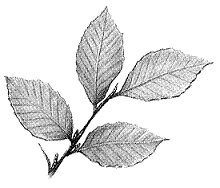All of the following are eukaryotic organisms that cause diarrheal disease EXCEPT
A) Cryptosporidium.
B) Cyclospora.
C) Entamoeba.
D) Giardia.
E) Campylobacter.
E
You might also like to view...
A digestive tract is complete if it
a. possesses specialized regions for different digestive tasks. b. produces acids and contains enzymes. c. is a one-way tube with a mouth and an anus. d. is surrounded by muscle. e. uses the same opening for ingestion and egestion.
The leaf arrangement illustrated in the accompanying figure is:

a. pinnate.
b. alternate.
c. compound.
d. whorled.
e. parallel.
In organogenesis, the ectoderm gives rise to:
a. muscle. b. the digestive tract. c. sense organs. d. the circulatory system. e. skeletal tissue.
Investigators decide to analyze the purity of a preparation of antibody molecules using SDS polyacrylamide-gel electrophoresis (SDS-PAGE). On Lane 1 of the gel, they load a sample of the antibody. On Lane 2, they load an antibody sample that has been treated with a reducing agent called mercaptoethanol, which breaks disulfide linkages. Following electrophoresis, they see distinct bands representing polypeptides with molecular weights of 50 kD and 25 kD in Lane 2 and only one band weighing 150 kD in Lane 1. What can the investigators conclude about their antibody based on the results of this experiment?
A.) their antibody preparation was pure; the 50-kD and 25-kD polypeptides are subunits of the mature antibody that were together by noncovalent bonds B.) their antibody preparation as not pure because it contains polypeptides of different molecular weights in Lane 2 C.) their antibody consists of a single polypeptide chain of 150 kD; treatment with mercaptoethanol cleaves the polypeptide backbone at random sites D.) their antibody is composed of subunits (50 kD and 25 kD in molecular weight) that each must include at least one cysteine residue E.) their antibody consists of a single polypeptide chain of 150 kD; treatment with mercaptoethanol cleaves the polypeptide backbone at specific sites